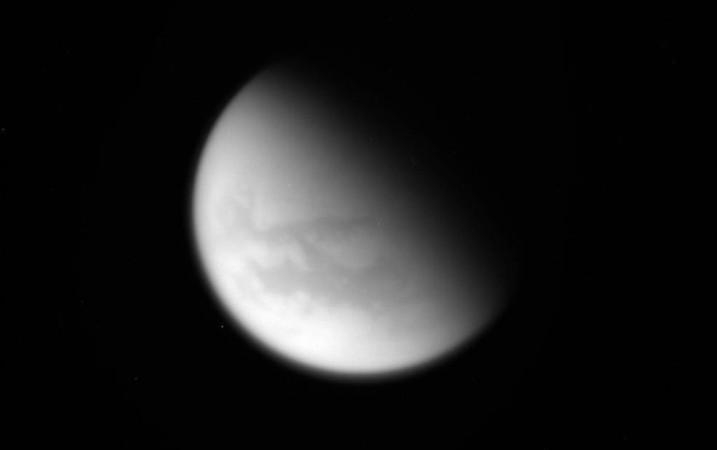
NASA's Cassini spacecraft completed its last flyby of gas giant Saturn's hazy moon Titan. The spacecraft is going to commence its last set of 22 orbits around the ringed planet before it plunges into the planet's atmosphere.
Also Read: NASA's Cassini captures a giant canyon Ithaca Chasma on Saturn's moon Tethys
On April 21, at 11:08 pm PDT (2:08 am EDT on April 22) Cassini completed its 127th close approach which was the final one. In this close flyby, Cassini passed by Titan's surface at a distance of 979 kilometres (608 miles).
The data and images accumulated by Cassini were transmitted to Earth following the encounter. The images of the hydrocarbon lakes and seas present at the north polar region of the moon will be analysed by the scientists.
The planned imaging coverage includes a region previously seen by Cassini's imaging cameras, but not by radar, a NASA statement revealed.
The evolving features of Saturn's hazy moon Titan have been dubbed "magic island" by the researchers. The radar team will be utilising the newly collected data for exploring and assessing the compositions and depths of the small lakes of the moon.
"Cassini's up-close exploration of Titan is now behind us, but the rich volume of data the spacecraft has collected will fuel scientific study for decades to come," said Linda Spilker, the mission's project scientist at NASA's Jet Propulsion Laboratory in Pasadena, California, as per a NASA statement.
The unmanned Cassini spacecraft has spent almost 20 years in the space where it was exploring Saturn and its moons. The spacecraft is heading towards its last act known as the Grand Finale. Titan's gravity bent Cassini's course while reshaping the spacecraft's orbit a little while it passed over the moon. This close encounter with Titan also led to a large increase in the pace of the craft with respect to Saturn, which is around 860.5 metres/sec (1,925 mph)
Now Cassini won't simply pass outside the main rings of Saturn; it will take 22 orbits between Saturn's rings and Saturn on April 26, 2017. The spacecraft would end the mission by a controlled fall plunging into Saturn's atmosphere on September 15, 2017.
"With this flyby, we're committed to the Grand Finale," said Earl Maize, Cassini project manager at JPL, according to a NASA statement.
"The spacecraft is now on a ballistic path, so that even if we were to forgo future small course adjustments using thrusters, we would still enter Saturn's atmosphere on September 15 no matter what," Maize concluded.
You can check out Cassini as it makes one of its Grand Finale dives in this animated video:








